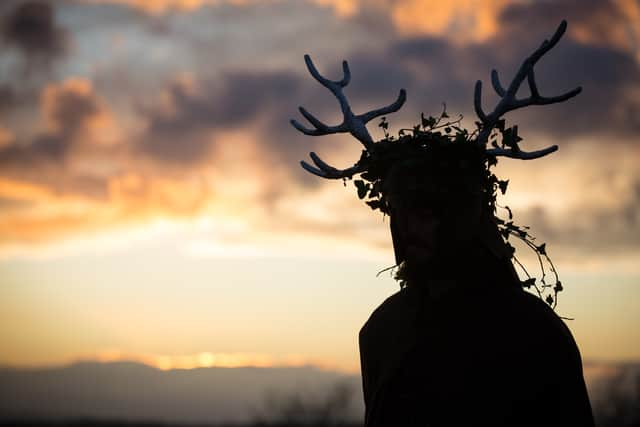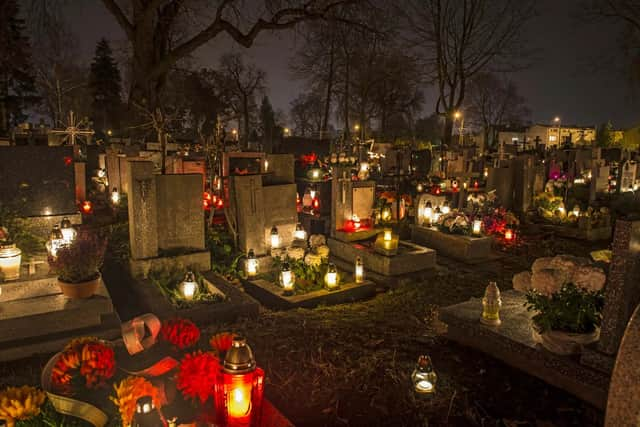The origins of Halloween: What is the Celtic festival of Samhain and how did the Romans influence it?
and live on Freeview channel 276
Throughout its history, Halloween has absorbed diverse cultural influences and has transcended its origins to become a globally celebrated holiday. Today, it continues to captivate people of all ages and has become a vaunted time of the year for businesses to pick up a little extra cash from the consumer.
But there is a lot more history surrounding Halloween than merely Halloween decor, candy, fancy dress parties and that one time of the year it’s acceptable to knock on a random person’s door and ask for good - or else run the risk of a trick befalling on you.
Advertisement
Hide AdAdvertisement
Hide AdHalloween, a holiday synonymous with costumes, candies, and spooky celebrations, has a history steeped in tradition and folklore that dates back centuries. Its origins are a fascinating tapestry of Celtic, Roman, and Christian influences, creating the complex holiday we recognize today.
So where did Halloween originate from, and has it deviated well away from the original intentions of the autumn celebrations?
Samhain - the original ‘Halloween’


Samhain (pronounced Sah-win) was a Gaelic festival marking the end of the harvest season and the beginning of winter or the "darker half" of the year. It is one of the four Gaelic seasonal festivals along with Imbolc, Beltaine, and Lughnasa. Historically it was widely observed throughout Ireland, Scotland, Galicia, and the Isle of Man (where it is spelt Sauin).
The word "Samhain" comes from the Old Irish word "samnu", meaning "summer's end". It was celebrated on the evening of 31 October, since the Celtic day began and ended at sunset. This is about halfway between the autumnal equinox and winter solstice.
Advertisement
Hide AdAdvertisement
Hide AdThe Celts believed that at Samhain, the boundaries between the worlds of the living and the dead were at their thinnest, allowing spirits to pass between them. This made Samhain a time of great importance for the Celts, who would gather to honour their ancestors and to ward off evil spirits. Some of the practices used during Samhain are still part of the Halloween we know and (some of us) love today - the building bonfires to ward off evil spirits, wearing costumes to disguise oneself from spirits, telling stories and legends about the dead and of course, feasting and drinking.
The Celts believed that the souls of the dead would return to their homes on Samhain. They would leave food and drink out for the spirits, and they would build bonfires to guide them home. There was also a darker side to Samhain though; the Celts believed that evil spirits were also active at this time. They would wear costumes and masks to disguise themselves from these spirits, and they would hold rituals to ward them off.
Samhain is still celebrated today by some Neopagans and Wiccans. It is also the origin of the modern holiday of Halloween.
Feralia and Pomona - The Roman’s evolution of ‘Samhain’
As the Roman Empire expanded, their influence merged with Celtic traditions, giving rise to two festivals: Feralia and Pomona.
Advertisement
Hide AdAdvertisement
Hide AdFeralia was a festival honouring the dead. It was celebrated on February 21st, and it was a day to commemorate the passing of ancestors and to offer them food and drink, while Pomona was a festival honouring the Roman goddess of fruit and trees. It was celebrated on November 1st, and it was a day to celebrate the harvest and to give thanks to Pomona for her bounty.
When the Romans conquered the Celtic lands, they began to combine their festivals with the local Celtic festivals. In the case of Samhain, they combined it with Feralia and Pomona. This is likely because Samhain was already a festival that involved honouring the dead, and it also coincided with the time of year when the harvest was finished.
The merging of these three festivals helped to create the modern holiday of Halloween. Halloween retains many of the traditions of Samhain, such as building bonfires, wearing costumes, and telling stories about the dead. However, it also incorporates elements of Feralia and Pomona, such as offering food and drink to the dead and celebrating the harvest.
Christianity replaces Samhain with ‘All Hallows Day’


Christianity later entered the picture with the establishment of All Saints' Day, or All Hallows' Day, on November 1st, a date chosen to replace Samhain. The evening before, known as All Hallows' Eve, gradually transformed into Halloween, combining elements of Samhain and Christian practices.
Advertisement
Hide AdAdvertisement
Hide AdWhen the Christian church came to the Celtic lands, they sought to convert the people to Christianity. One way that they did this was by appropriating pagan festivals and giving them a Christian meaning. In the case of Samhain, the church renamed it "All Hallows Eve" (or "All Saints' Eve") and celebrated it as a day to remember the saints and martyrs of the church.
The following day, November 1st, became "All Saints' Day", a day to celebrate all of the saints in heaven. In some places, All Saints' Day was also called "All Hallows Day", and the two holidays were celebrated together.
Over time, the secular aspects of Samhain, such as the building of bonfires and wearing costumes, became incorporated into All Hallows' Eve. This is how the modern holiday of Halloween came to be.
The change became a complex process of syncretism, in which elements of both pagan and Christian beliefs and practices were blended together. As a result, Halloween is a holiday that is both pagan and Christian, and it continues to be celebrated (or despised) by people of all faiths today.
Comment Guidelines
National World encourages reader discussion on our stories. User feedback, insights and back-and-forth exchanges add a rich layer of context to reporting. Please review our Community Guidelines before commenting.
